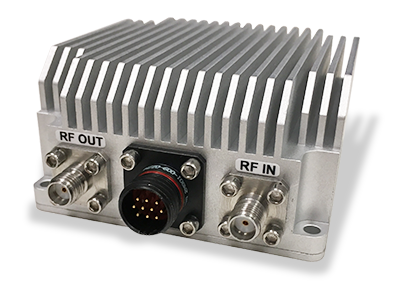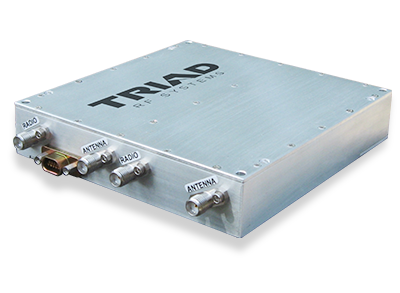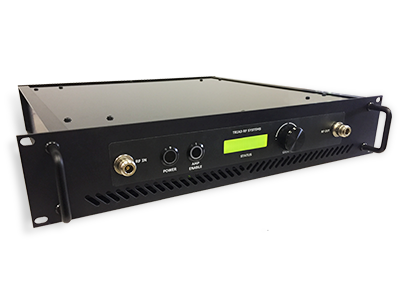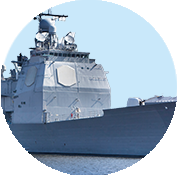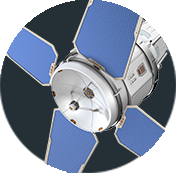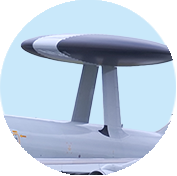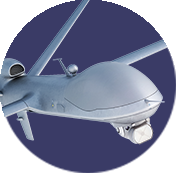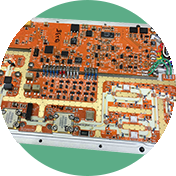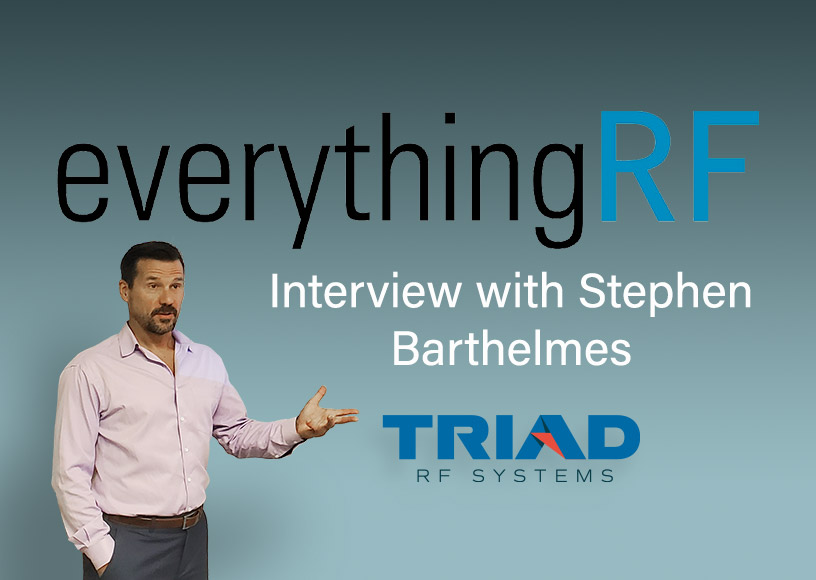
Triad talks amplified radios, Doherty techniques, SDR, and UAVs with everythingRF
We talk about everything from amplified radios and Doherty techniques to software defined radio (SDR) systems and UAVs in an interview with everythingRF this week.
Recently, online RF and magazine industry journal everythingRF interviewed Stephen Barthelmes, Co-founder and Partner at Triad RF. The following is an excerpt.
everythingRF: Can you give us a brief history about Triad RF?
Stephen Barthelmes: Triad RF was established in 2010 when the idea for the company began. In 2013, Dave, Dean and I got together to begin the development of RF products that were underserved by the market. By bringing the decades of knowledge that we had accumulated together, we implemented solid processes in sales, design and manufacturing that produced products that were cutting edge in performance and cost. We also understood the market pressures for increasing RF power to enhance data transmission while simultaneously improving overall efficiency. We stepped up to that challenge by creating some of the most linear and efficient amplifiers in the market.
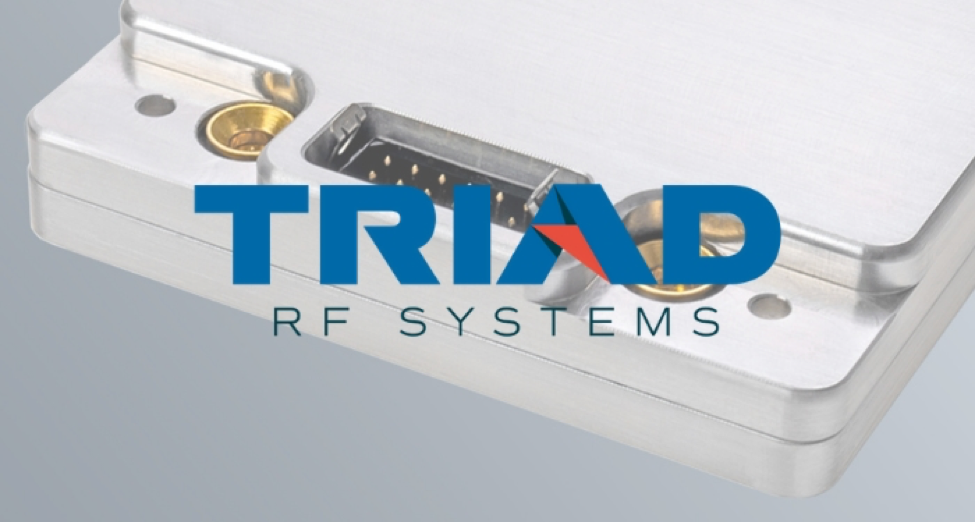
everythingRF: What types of products do you develop?
Stephen Barthelmes: We design and manufacture integrated radio systems, RF/microwave bi-directional amplifiers, custom multi-functional amplifier systems, CubeSat frequency converters and amplifiers and wideband amplification for EW and counter UAS systems.
At the core of most of our product line is the RF and microwave power amplifier. We utilize many of the latest GaN transistors and incorporate Doherty amplifier techniques to provide the best efficiency available while maintaining linearity to pass measurements such as error vector magnitude (EVM) and adjacent channel power ratio (ACPR). We also develop lightweight COTS bi-directional amplifiers that are reliable, and rugged enough to pass any MIL-STD-810G test. Our dual (2x2) and quad (4 x 4) channel units are the first choice of many multi in multi out (MIMO) radio system designers in applications where more RF power is required to extend the distances of high date rate links. We have had several customers transmit and receive 10 Mbps and greater over 100 miles. Our low-SWaP (size, weight, and power) designs are ideal for unmanned vehicle applications where every ounce matter and every mA can make the difference of a successful mission. We are already flying on several platforms including the Penguin B/C, Bat 12, and Shadow M2.
everythingRF: Can you tell us more about your RF Amplifier expertise or capabilities?
Stephen Barthelmes: Our advanced amplifiers are tailored for the multitude of signals that can be generated from software defined radio (SDR) communication systems. We also qualify our products to ensure that we deliver the promised data rate at the specified RF output powers. In addition, internal monitoring and auto power control circuitry take nearly all the guesswork and troubleshooting out of deploying a long-range, high-bandwidth link.
Our product line spans 20 MHz to over 30 GHz and covers VHF, UHF, L, S, C, X, Ku, and Ka bands. Our products are available in many different form factors intended for various applications including ultra-low-SWaP unmanned systems, rugged wheeled/tracked/maritime systems, or rack-mounted chassis.
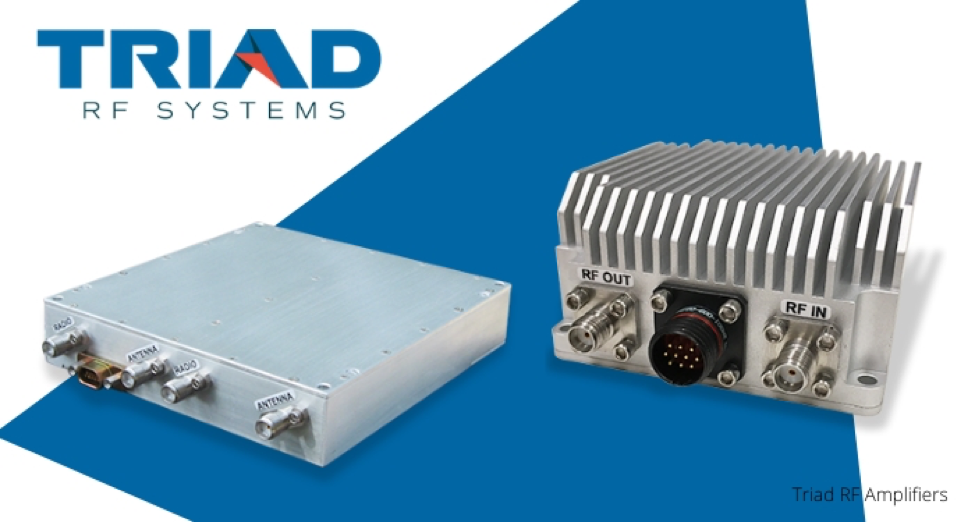
everythingRF: What market segments do you target and which segment drives the most business for you? Do you see this changing over the next few years?
Stephen Barthelmes: Currently, our largest segment is data and video link products due to the increasing demand of transmitting and receiving HD video over the air. Customers for these products are typically in the aerospace, military, and surveillance industries. A majority of their products are manned and unmanned aerial and ground vehicles (UAV/UAG). As far as the next few years, we see growth in all of our target markets, however, if we properly market and support our CubeSat product line, it could grow definitely grow into our largest business segment.
everythingRF: What differentiates you from other RF Amplifier manufacturers?
Stephen Barthelmes: We tend to take on challenging projects that are difficult technically and are needed in a short time frame. Due to the issues this presents, we have built a strong engineering team that can respond in a timely fashion. Many of our engineers can perform multiple functions of the design process which allows us to move through it quickly since there is not a lot of back and forth between several team members. We also have heavily invested in software to help us get the RF performance and heat dissipation figured out the first time.
Technically, our linearity expertise allows us to push the performance limits of the GaN or LDMOS transistors that we design around. We understand their limitations but also know how to change their performance through various means in design and test. This is why our linearity results are better than many.
Lastly, since we are small and nimble, we do not get slowed down by bureaucracy and endless meetings. We communicate quickly between sales, engineering and production and have put the proper systems in place to produce a proposal or quote in a timely fashion.
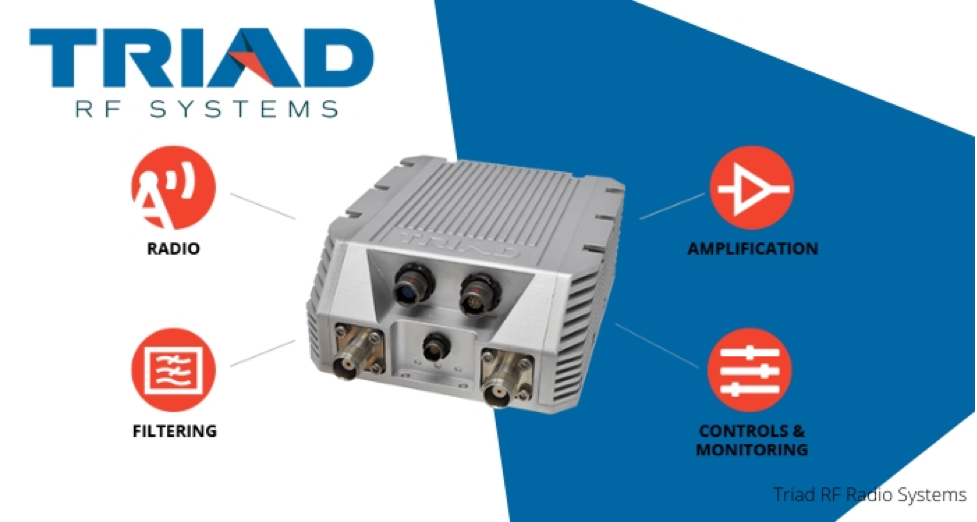
everythingRF: You recently added Amplified Radio Systems to your product portfolio. What are these Radio Systems? Where are they used? Why did you decide to get into this space?
Stephen Barthelmes: The Triad High Power Radio (THPR) is basically a high-power amplified radio, i.e.>10W per channel. Over the years, we found many customers that purchased MIMO radios and BDAs separately had issues when integrating them. We would receive emails and calls stating that the links performed better without BDAs than with. After endless hours fielding these issues, we decided to do the integration ourselves so that we could control the interface. We also took advantage of the radio manufacturers providing small OEM versions of their products which allowed Triad to make the THPRs as small and light as possible.
Due to our RF expertise, we also added circuitry to ensure the amplifier is providing the maximum power it is capable of depending on the user's requirement such as maximum distance, or maximum data rate. Since we control the amplifier, we can adjust the gain to ensure we are getting every dB out of the unit to provide the customer with those extra miles of distance that may have been lost with an external integration.
By developing the THPR, we took the guesswork out of the integration, allowing the customer to concentrate on what they do best, perfecting the platform. We also have the tools to design a solid mechanical solution that provides the most RF power while ensuring the unit maintains a reasonable temperature during all aspects of the mission.
The THPRs are designed to work with COTS radio systems from manufacturers such as, Domo Tactical Communications, Silvus Technologies, Microhard Systems, Doodle Labs, and several others. They extend their ranges in order to address the command, control, and throughput needs of advanced unmanned systems.
To read the full article on everythingRF, click here. To learn more about Triad products and services, contact us.

